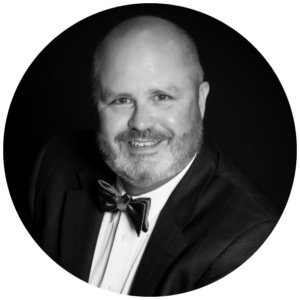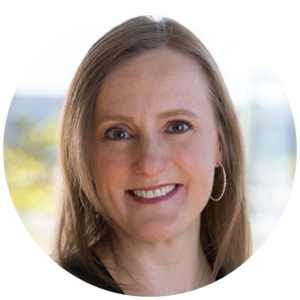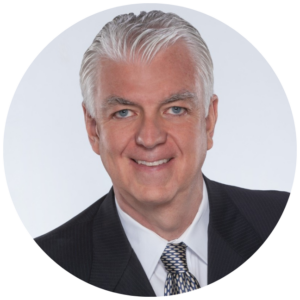Every Doctor Has Their Day
We’re rapidly approaching National Doctors Day, which is celebrated each year on March 30. Doctors are at the heart of the healthcare system, providing care for more than 1 billion patients annually. If anybody has earned a day of appreciation, it’s our docs. Locumpedia launched NationalDoctorsDay.org last year, and we’ve updated it in time for this year’s celebration with a bunch of free assets to help staffing agencies celebrate our healers. Check it out if you haven’t yet!
2024 NALTO/NAPR Convention Draws Record Crowd; Fall Fly-In Location Announced
Like many reading this summary, Locumpedia is still riding that “post-conference high” and trying to maneuver the mound of work and unanswered emails we couldn’t get through during the three-day stretch of last week’s annual NALTO/NAPR Convention.
There’s only so much one can remember from a jam-packed schedule of discussions, panels, and exhibits, so we’ve compiled the highlights into a recap to help our readers find that stat, quote, or details they might have missed.
Last week’s event in the “Queen City,” Charlotte, North Carolina, drew a record-breaking crowd of over 280 professionals from the locum tenens and physician staffing industry. Amid the backdrop of “uptown” Charlotte, lively discussions and networking opportunities set the stage for an in-depth analysis of the evolving landscape of physician recruitment and retention, alongside exploring avenues for business expansion within the locum tenens sector.
In our complete, “no-frills, just-the-facts” summary of last week’s event, we covered:
- Keynote speaker Daniel Kuzmanovich of Advisory Board’s views on the “redefined” state of the physician landscape, spotlighting the intensifying competition for top talent among staffing agencies, private equity, and retail giants.
- Jeff Bowling of Four Piers Capital’s insights into scaling locum tenens operations, advocating for company-wide focus, strategic planning, and strong leadership as key success factors. Bowling emphasized the importance of resilience and cultural alignment within teams to help foster an environment conducive to growth and operational excellence.
- Legal experts Sarah Kroll-Rosenbaum and Montaye Sigmon from Akerman LLP provided a brief yet comprehensive overview of some of the recent state healthcare laws affecting the locum tenens industry. They highlighted the critical role of compliance and legal acumen in navigating the complex regulatory environment.
- The convention also featured a panel of locum tenens providers sharing their motivations and experiences, shedding light on the diverse paths that lead physicians to locum tenens work—we’ll have more on this soon!
These discussions and presentations over the past few days at the NALTO/NAPR Convention offered some valuable insights and potential strategies to help agencies navigate the challenges and seize the opportunities within the dynamic landscape of the locum tenens and physician staffing industry.
NALTO Returns to the Lone Star State for the 2024 Fall Fly-In in Austin; Details to Come!

La Vida Locum
Medicus’ Takeaways for Clinical Staffing Leaders
Medicus Healthcare Solutions released its bi-monthly newsletter with specific insights and trends they see in healthcare. They detailed three major takeaways from the December 2023 edition of C-Suite Monitor, revealing crucial insights for healthcare leadership. Here’s what they found:
1. Gastroenterologist Shortage Looms: A Medicus Healthcare Solutions White Paper predicts a shortage of 1,630 Full-Time Equivalents (FTEs) in gastroenterology by 2025 because of an aging population and limited fellowship positions.
2. Overcoming Clinical Staffing Gaps: The Medicus Transition Program offers a comprehensive solution, emphasizing identifying early warning signs through tools like heat maps and investing in retention strategies.
3. Successful Anesthesiology Transition in Las Vegas: A Las Vegas hospital faced severe anesthesia staffing challenges, leading to lower operating room (OR) utilization. Transitioning from outsourced to employed models through the Medicus Transition Program increased their OR utilization to over 90% within 45 days, showcasing the program’s efficacy in managing transitions and improving service delivery.
MPLT’s Tips for Smooth Locum Tenens Billing
Billing for locum tenens can be complex. To assist facilities in navigating this, MPLT Healthcare created a blog post outlining strategies for their facility audience. These strategies are designed to help educate a facility’s leadership team. MPLT says its first step is establishing a standardized onboarding process, which is crucial for ensuring new physicians adapt quickly and paperwork is completed promptly, leading to swift reimbursement.
Understanding Medicare and Medicaid guidelines, particularly those set by the Centers for Medicare and Medicaid Services, will also help agencies maximize benefits and ensure proper billing, especially concerning provider tenure. Collaborating with a specialized staffing agency also helps facilities alleviate the burden of billing and ensures an efficient handling of payments.
Discover How Six Podcasts Guide Physicians Through Locum Tenens
Providers primarily pursue locum tenens for extra income, flexibility, and a chance to travel. Still, there’s so much to learn about the profession. Locumstory put together a list of six podcasts that offer insights into various aspects of locum tenens work.
- The “Locumstory Podcast” features firsthand experiences and advice, including filing taxes as a contractor, negotiating contracts, and more.
- “The White Coat Investor” discusses the financial aspects of being a physician. Dr. Jim Dahle is an emergency medicine physician who has learned ways to secure his financial future. His goal now is to spread the good news to other physicians.
- “ReachMD” is one of the largest learning platforms for physicians, covering just about every topic, including locum tenens.
- “The Financial Residency” delves into financial topics pertaining to physicians and their families. The podcast also features success stories about doctors who have paid off their loans by working locum tenens.
- “Docs Outside the Box” explores non-traditional career paths, including locum work and other ways to push physicians past the “limits of the status quo.”
- “KevinMD” provides diverse perspectives on healthcare, including insights from physicians who have experienced the benefits of locum tenens firsthand.
Locum Leaders
NALTO Names New Board Members, CHG Launches Mobile Apps for Locums, and More


NALTO Names Two New Board Members: Shawn Mullen, President and Chief Revenue Officer for Interim Physicians (upper-left), and Ethan McWilliams, co-CEO of Wilderness Medical Staffing, were recently elected to the NALTO Board of Directors.
The election, which took place last month, saw Mullen and McWilliams secure the two open seats amidst a competitive field of candidates. The three-year term officially began in March.
In their positions, Mullen and McWilliams will attend regular board meetings, serve as chair or vice chair of various committees, participate in special projects, and represent NALTO at national events.
 Former NALTO President Frank Phillips Passes Away: Former NALTO president and longtime locum tenens professional Frank Phillips has passed away. Phillips, of Hartwell, Georgia, spent 30 years of his life in the locum tenens industry. Highlights of his career included founding Weatherby Healthcare in 1995 and lengthy stints at Interim Physicians, Maxim Physician Staffing, and, most recently, HDA MD Staff, where he served as president for four years. Phillips was honored during the most recent NALTO Board of Directors meeting at the annual NALTO/NAPR Convention last week in Charlotte. He served as NALTO president beginning in 2007 for three consecutive terms.
Former NALTO President Frank Phillips Passes Away: Former NALTO president and longtime locum tenens professional Frank Phillips has passed away. Phillips, of Hartwell, Georgia, spent 30 years of his life in the locum tenens industry. Highlights of his career included founding Weatherby Healthcare in 1995 and lengthy stints at Interim Physicians, Maxim Physician Staffing, and, most recently, HDA MD Staff, where he served as president for four years. Phillips was honored during the most recent NALTO Board of Directors meeting at the annual NALTO/NAPR Convention last week in Charlotte. He served as NALTO president beginning in 2007 for three consecutive terms.
CHG Launches Two New Apps for Locum Tenens Providers: CHG Healthcare has introduced two new mobile apps, MyCompHealth and MyWeatherby, tailored for locum tenens providers on assignment.
These apps look to streamline administrative tasks like travel details and shift assignments, offering a convenient solution accessible for providers via smartphones. Both apps provide features like biometric login, time entry, travel itineraries, schedule details, and access to support teams. The apps are now available for download on Google Play and the Apple App Store.
 “We’re excited to launch these apps and take some of the administrative stress out of the locum tenens process for our healthcare providers,” said Leslie Snavely, CHG President. “As the industry leader, our goal is to give them the best service and the easiest-to-use technology so that they can do more of the work that got them into medicine in the first place—caring for patients.
“We’re excited to launch these apps and take some of the administrative stress out of the locum tenens process for our healthcare providers,” said Leslie Snavely, CHG President. “As the industry leader, our goal is to give them the best service and the easiest-to-use technology so that they can do more of the work that got them into medicine in the first place—caring for patients.
Jackson + Coker Partner With Dr. Lorna Breen Foundation: The Dr. Lorna Breen Heroes’ Foundation has partnered exclusively with Jackson + Coker Locum Tenens to address physician and advanced practice provider burnout and well-being by participating in the “ALL IN: Caring for Caregivers Program.” Through the program, Jackson + Coker commits to advocating to eliminate mental health care access barriers for physicians and APPs, participating in a digital curriculum to enhance understanding of the drivers of burnout, and creating and implementing action plans to reduce inefficiencies and streamline processes that can impact burnout.
 “Partnering with the Dr. Lorna Breen Heroes’ Foundation is a proud moment for us, reflecting our dedication to making a positive impact on the lives of everyone we work with,” said Tim Fischer, president of Jackson + Coker Locum Tenens. “This partnership is more than a professional endeavor; it’s a heartfelt commitment to the well-being of physicians and advanced practitioners. By combining our resources, we have an opportunity to impact the physicians and advanced practice providers we serve today and for generations to come while also sparking meaningful change within the facilities they serve.”
“Partnering with the Dr. Lorna Breen Heroes’ Foundation is a proud moment for us, reflecting our dedication to making a positive impact on the lives of everyone we work with,” said Tim Fischer, president of Jackson + Coker Locum Tenens. “This partnership is more than a professional endeavor; it’s a heartfelt commitment to the well-being of physicians and advanced practitioners. By combining our resources, we have an opportunity to impact the physicians and advanced practice providers we serve today and for generations to come while also sparking meaningful change within the facilities they serve.”
Hire Power
APA, NALTO Host Webinars To Improve Well-Being and Improving Communication
The American Psychiatric Association (APA) has compiled a schedule for sessions addressing physician wellness and burnout throughout May, beginning May 4 with its session titled “Empowering Healers: The AMA Recovery Plan for America’s Physicians – a Blueprint for Restoring Joy to the Practice of Medicine.” Visit APA for more details. Attendees can use the search feature on the event’s website to find other archived sessions on the topic.
 The National Association of Locum Tenens Organizations is partnering with Butler Street, a management consulting firm focusing on sales training and leadership development, for a webinar on April 2 at 2 p.m. ET on “Breaking Down the AI Communication Barrier.” Principal Consultant for Butler Street and staffing industry expert Robert Reid will present a session for NALTO members on the role of EQ in communication with prospects, understanding behavioral styles, and tips to build trust and increase engagement. Register here for the webinar.
The National Association of Locum Tenens Organizations is partnering with Butler Street, a management consulting firm focusing on sales training and leadership development, for a webinar on April 2 at 2 p.m. ET on “Breaking Down the AI Communication Barrier.” Principal Consultant for Butler Street and staffing industry expert Robert Reid will present a session for NALTO members on the role of EQ in communication with prospects, understanding behavioral styles, and tips to build trust and increase engagement. Register here for the webinar.
Making the Rounds
Aging Workforce and Patient Base Intensify Physician Shortage Crisis
An aging patient population and an aging physician workforce are putting additional strain on the projected shortage of 124,000 providers by 2034. Becker’s ASC Review laid out five concerning numbers regarding physician retirement.
- The average age of practicing physicians in the US is 53.9, which is more than a decade older than the national labor force median age.
- According to a Medscape report, a significant portion of the physicians in their 50s, around 41%, plan to retire in their early 60s.
- Docs say burnout is a primary driver of their retirement decisions, with 74% of physicians citing it as the leading factor, as highlighted in the “Physician Burnout & Depression Report” for 2024.
- Notably, 49% of physicians reported experiencing burnout, potentially prompting earlier retirements.
- 14% of male and 16% of female physicians are considering leaving medicine due to severe burnout, emphasizing the critical need to address this issue within the healthcare industry.
Study Reveals 418 Rural Hospitals at Risk of Closure Amid Financial Strain
There’s a looming crisis gripping rural healthcare systems in the country. Approximately 60 million people rely on these services, and the drying up of federal pandemic funding has exacerbated financial strains on rural hospitals. A recent study by the Chartis Center for Rural Health revealed half of the nation’s 1,810 rural community hospitals operate at a loss, with 418 at risk of closure. The study shows significant shifts in rural healthcare, with a rise in Medicare Advantage patients and declining access to inpatient care, with 167 hospitals closing or converting since 2010.
Recent closures have disproportionately impacted obstetrics (OB) and chemotherapy services, the report states, contributing to rising maternal mortality rates in rural areas. The repeal of Roe v Wade would also further limit access to OB services in certain states, compounding existing challenges. The survey showed rural areas also face worse outcomes for cancer patients, with higher death rates compared to metropolitan areas, a trend that is worsening over time. Significant ramifications would also come with the closure of rural hospitals, with significant job losses impacting communities.
Hospitals Seek Solutions in Education and Resilience to Tackle Staffing Crisis
A recent American College of Healthcare Executives survey confirms that hospital CEOs are grappling with concerns about their workforce shortages. These labor issues also take precedence over financial and behavioral health challenges, with CEOs primarily troubled by the shortages of registered nurses and physician specialists and burnout among their non-physician staff. This sentiment was echoed by 241 community hospital CEOs surveyed in the fall of 2023.
Addressing these concerns will require multifaceted approaches, including developing partnerships with educational institutions to bolster the healthcare workforce pipeline and support the resilience of their current staff. Deborah J. Bowen, president and CEO of ACHE, emphasized the importance of nurturing immediate and long-term solutions to combat the workforce crisis. As healthcare leaders navigate these challenges, they can explore alternative care models and optimize their existing resources to mitigate the impact of workforce shortages. Despite the complexities involved, proactive measures are essential to address the ongoing workforce crisis in healthcare sustainably.









